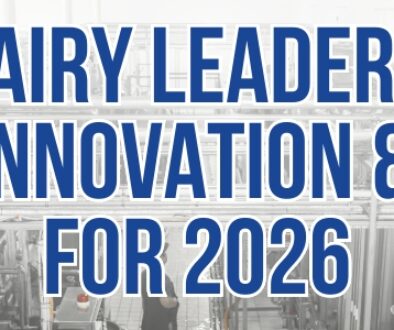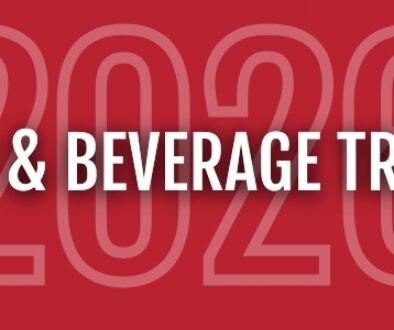Memo, Meeting Or Meal?
This article was originally published in Insight on Manufacturing and features insights from HART Design & Manufacturing’s Human Resources Director, Heather Marconi.
Getting internal communications right helps improve worker satisfaction.
When your company makes organizational changes or has other company news to convey, how and when do you let your employees know? How much information do you share, and how do you convey that information in the most effective way?
Company leaders often struggle with these questions when it comes to internal communications. A recent study by New York-based Staffbase shows that 76% of non-desk workers in manufacturing don’t really feel informed about the changes happening in their companies.
And Staffbase points out that being well-informed isn’t just about knowing what’s going on — it has a direct effect on job satisfaction and trust in the company.
According to the study:
• About 94% of employees who feel “very well informed” about organizational changes are either “very happy” or “somewhat happy” with their jobs. That compares with 38% of employees who believe they are “not at all informed” about changes.
• About 66% of non-desk workers at U.S. manufacturing companies rate the internal communications they receive as “only fair” or “poor.” Only 20% of their desk-based colleagues feel the same.
Technology And The Communication Gap
David Maffei, senior vice president and general manager of Staffbase, says creating a more positive experience for workers helps increase productivity and engagement. And the more informed an employee is, the more likely they are to stay with the company.
Maffei says some manufacturers might not think there’s an ROI in communication software licenses for frontline workers who maybe don’t get a company email address, laptop or phone. That technology gap “makes solving the communication problem that much harder because you don’t have the tools that allow you to do it,” he says.
Striking The Right Balance
But for those companies that have invested in communications technology, there’s still the problem of how much to communicate and when.
“It’s a massive problem … those who have made a concerted effort to focus on communication tend to overcommunicate,” Maffei says. “And those that aren’t sure what a successful communication strategy means tend to undercommunicate.”
The balance, he says, is at the intersection of context and relevancy — which is personalization. That means different departments within your organization may receive different volumes of communication, Maffei says.
An example might be a U.S.-based manufacturer with three factories in South America.
“There’s going to be stuff that’s relevant and contextual for those workers about what’s happening in their world, what’s local to them, what’s interesting to them, what’s allowing them to do their job better,” he says.
There’s no perfect prescription for internal communications strategy within manufacturing because it’s such a diverse industry, Maffei says.
Generational Differences In Communication
One consideration is how different generations of workers prefer to communicate, says Betsy Allen‑Manning, a leadership speaker and author who will be the keynote at this year’s Manufacturing First Expo & Conference. The younger generation of workers wants to be seen as collaborators in the workplace, she says.
“They want to feel like they’re blossoming, being groomed for other roles, but that also involves contributing their ideas,” Allen-Manning says. “The more input you get, the more buy-in you get — the more loyalty you get.”
Adapting Communication To Company Size
Heather Marconi, human resources director for HART Design & Manufacturing in Green Bay, says the number of employees can also be a factor.
“How you choose to communicate with a group of 50 is much different than 300 or a thousand,” Marconi says. “It’s not possible to get in the faces of a thousand people at one time, typically, and have it be a meaningful message.”
HART, as a company with 55 employees across seven or so departments, communicates via a variety of platforms, including internal email, its HRIS (Human Resources Information System) platform, and in‑person gatherings with a meal, at which the company offers general overviews of how things are going.
“We just try to make sure that we have enough information out there that everybody’s informed, that we’re transparent about the state of the business and what our goals are as an organization and how we are all going to work toward them,” Marconi says.
Communication Builds Trust And Engagement
But finding that right balance of communicating enough without communicating too much is always a challenge.
“I probably say it 10 times a year: that I think every single company’s largest hurdle is communication,” Marconi says. “People aren’t always satisfied with the information that you put out, or what targets one group maybe doesn’t apply to the next group.”
But working on getting it right promotes trust within your organization, she says. It increases engagement, improves job satisfaction and improves processes, she adds.
“It helps people feel secure in their roles, secure in the organization, knowing that we’re in a good position financially or within the community or any of those things,” Marconi says.
Good communication — particularly in person — helps prevent misunderstandings, she says: “It addresses issues before they turn into big things. And that helps people stay engaged in their roles, I think, and makes them feel like they’re part of the solution.”
Continuous Improvement At Robinson, Inc.
At Robinson, Inc. in De Pere, “improving our internal communication and employee engagement is an ongoing goal here,” according to Lynn Jones, marketing manager.
“We are by no means perfect at it,” Jones says. “Our efforts are ever‑changing.”
Robinson currently communicates through most of the common channels: in person, digital monitors, email, the company’s HRIS, mailers and bulletin boards.
While Robinson has been researching options for intranet, Jones says the Staffbase report “reinforces our concern that it’s still not a great tool for the non-desk, production employees.” The report notes that while intranet is in the top three forms of effective internal communications, it still comes in third with just 28% of employees preferring it for learning about company changes.
Listening To Employee Preferences
Finding the preferred method of communication can be as simple as asking the employees themselves.
“We just completed a benefits survey to all employees, and it indicated that people prefer getting things in the mail more than any other method of communication,” Jones says. “This was speaking directly to benefits information, but it relates.”
Relevance And Frequency In Communication
Sachin Shivaram, CEO of Wisconsin Aluminum Foundry in Manitowoc, says he struggles with making sure communications are relevant and specific across the various groups within the company.
“I think that’s the thing that management often faces, because you kind of live in your own world and you want to talk to everybody about what’s relevant to you and what you know about,” Shivaram says.
The foundry also sends out monthly surveys to all employees. That monthly survey used to ask the same questions so responses could be tracked, but some people grew bored with them and stopped responding.
“Now we do unique tailored questions each month based on something that’s happened in the plant that you’re in, or whatever the buzz is about,” Shivaram says. “And we try to get feedback that way.”
Using Feedback To Inform Communication
Once there is enough feedback centering on a particular issue, Shivaram says, then he might plan a town hall meeting. Recently, one focused on the company’s acquisition of other companies outside of Manitowoc.
“People didn’t really understand, ‘how do I benefit?’ … they weren’t really seeing the value of us growing and investing in acquiring other companies,” Shivaram says.
Shivaram also enjoys writing longer memos where an issue can be shared with nuance, particularly for topics that might not be easy to convey on social media or even in person. He writes several, including a monthly memo to all salaried employees on company progress and one to production employees to focus on an issue in detail, he says.
Learning From Mistakes And Building Authenticity
An example is when the company had a horrible safety incident this summer in which a worker was degloved — losing skin on the surface of his hand, Shivaram says. “And that was occasion to talk about why we need better process control and what happened there.”
Special circumstances might also affect how a company communicates with its workers. During the pandemic, Shivaram sent out a memo every day for 99 days. He says the daily communication brought the team closer.
“I think that what I learned from that episode from the pandemic time was frequency is very powerful,” Shivaram says. “The more frequent doesn’t really matter if it’s all the same format or always well composed, but there’s a huge benefit from high frequency of contact.”
Sometimes leaders think a message must be careful and perfect, but that actually makes you communicate less, Shivaram says. He’s found it valuable to send out even just a one-liner about a particular issue or to congratulate someone.
On that front, the company also has employee-only Facebook pages at each of its seven sites on which people are conveying sometimes very candid feedback, which is another way for the company to keep a pulse on what’s going on.
That’s not to say leaders will always get it right. One time, after a catered meal for the foundry, an employee complained on one of those Facebook pages about the turkey being dry. Shivaram responded, telling the man he could afford to skip a meal or two.
“I definitely caught a lot of flak from that,” he recalls. “I actually ran into him at a bar a year later, bought him a beer, and I shook his hand. I said, I apologize for that. He still detests me for this.”
While Shivaram says his online comment wasn’t the best choice, he enjoys the opportunity for direct conversation and believes other people seek it, too: “There’s a lot more appetite for candor and a desire for authenticity, and even for things to not feel so polished. And social media, it is actually a great way to have real, authentic interaction.”
The Essence Of Organizational Communication
Finding the right communication balance is important for motivation, he says. “It goes to the very essence of what is the function of an organization,” Shivaram says. “I mean, we need to work together to achieve some outcome. And how can you do that if people don’t know what they need to do to help us achieve that outcome?”
Keep Up To Date On Cheese Industry News
Find all of HART Design & Manufacturing’s current industry news here.
Source: Insight on Manufacturing




